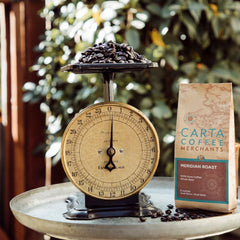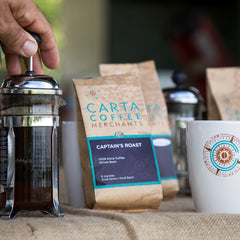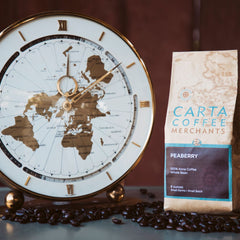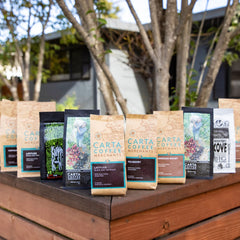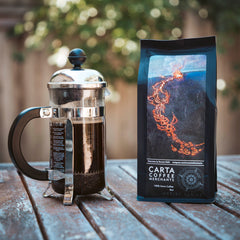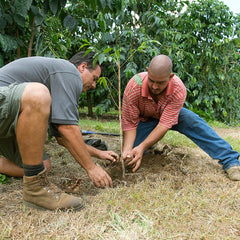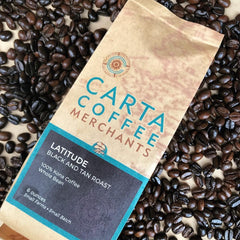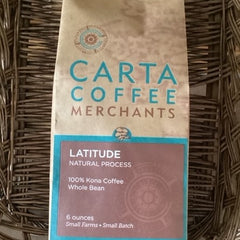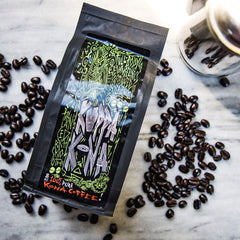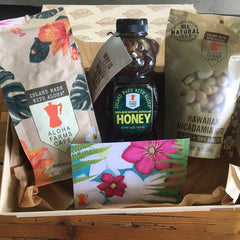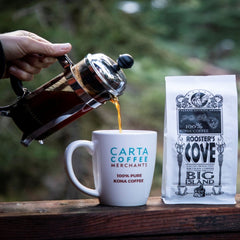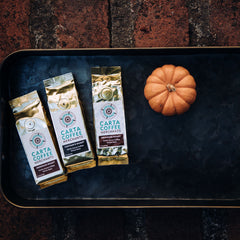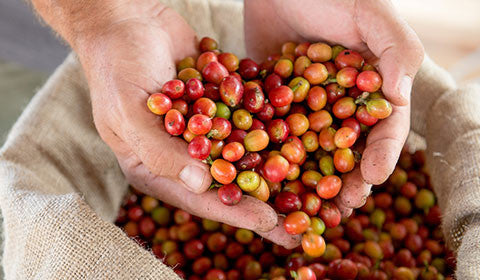Posted on

When waking up to a brand new day, there’s nothing like rolling out of bed and pouring yourself a fresh cup of premium coffee to lift you out of that morning grog. I mean, are we ever really awake before that first caffeine jolt hits?
For years, there were only so many ways to get that morning jolt. Thankfully, as the love of coffee has grown, so have the methods for brewing it. Let’s check out the pros and cons of four popular coffee makers, and why they may—or may not—be the best option for you.
Automatic Drip Coffee Makers
For most of us, this is the machine that introduced us to this buzzy beverage. Who can forget the sounds and smells of your parent’s old-school drip machine bubbling away on a Sunday morning? Thought it’s not a bad way to prepare an easy cup of coffee, those who truly treasure taste likely won’t make this their first pick.
The Good
For busy families or those just needing a quick buzz, these trusty coffee makers might be the perfect way to go. Also, unlike most other at-home coffee makers, automatic drip coffee makers offer an impressively wide-array of options including capacity, price, add-ons, etc.
For example, if affordability if your priority, try this simple, yet highly-rated Mr. Coffee 4-Cup Programmable Brewer for under $20. Or for around $300, the Breville BDC650BSS Grind Control offers 8 coffee strength options, a bean hopper and grinder with a ½ pound capacity, an insulated carafe that can fill up to 12 cups, and more.
The Bad
Many malign the subpar taste of drip coffee makers. Unless you’re cleaning the machine between every use, expect old grounds and water to stick around and effect the flavor. The plastic tubes and reservoirs common in drip coffee makers will also impact taste, especially in older machines.
Also, if you live alone or are the only coffee drinker in your household, unless you consume tons of coffee (which we entirely endorse), preparing an entire carafe can be wasteful.
French Press
When it comes to French press coffee, simplicity says it all. It may not have timers, grinders, or even a button, but man does it make one darn good cup of coffee. All you’ll need is a French press, a couple scoops of some coarsely ground coffee beans, and hot water.
With the plunger up, let everything brew in the glass or stainless steel carafe for about 4–6 minutes. This allows the water to deeply seep into every bit of the beans. When it’s ready, push down on the plunger to filter out the grinds. Pour out the coffee into a cup and sip nothing less than a smooth, stellar brew.
The Good
The French press is flat-out amazing at preserving the pure flavors of the coffee beans themselves. Instead of getting hints of paper filters, leftover grounds, and plastic tubing gunk, taste the natural oils otherwise filtered out, and the essence of the entire coffee bean in each sip. It’s coffee at its purest.
There’s also no beating the minimal amount of waste created with the French press method. Aside from the grounds, everything is 100% reusable.
The Bad
Though not complicated, there are more steps required to make a cup of French press in comparison to some other methods. Also, making big batches of coffee with a French press is a hassle, making it a less than ideal method for larger households.
Keurig & Other Single-Serve Coffee Makers
If easy always wins, it’s hard to beat single-serve coffee makers. With 29% of coffee drinkers using this method, a huge number considering how new the concept is, consumers clearly agree. Commonly called a Keurig after the company that thrust this coffee-making method into the spotlight, other popular brands like Mr. Coffee also offer decent models.
Though maligned by certain coffee connoisseurs and the environmentally-conscious for various (and often valid) reasons, this machine—delivering fresh coffee at the push of a button—has come a long way in both respects.
The Good
Once set up, the Keurig is SO easy to use. Just insert your K-Cup (also called a coffee pod) into the machine. Make sure the water reservoir is filled and press “Start.” About a minute or so later—BOOM—you’ve got a cup of freshly brewed coffee. With tons of models on the market, it’s easy to find the perfect machine for you.
Significant strides have also been made in terms of sustainability. Keurig has committed themselves to making 100% of all K-Cups recyclable by 2020, and many already are. Some pods are also entirely biodegradable.
The Bad
Ask the right (or wrong) person what they hate about the Keurig, and expect them to go on for days. To be fair, between sustainability issues, the lack of available K-Cup options, and the expense, there is plenty to say. Especially if you’re looking to serve multiple coffee drinkers a day, using new pods for every cup adds up at the landfill, and in your bank account.
There are also many ways to minimize these effects, like using reusable K-Cups, but if it’s hard to shake the guilt, pick another method. Feeling bad is never a good way to start the day.
Cold Brew
Cold brew coffee has absolutely skyrocketed in popularity over the past several years, and for good reason. Especially for a hot, summer day, nothing is more refreshing. It’s also incredibly easy-to-make and delivers rich, deep, undiluted flavors that’ll make you forget iced coffee ever existed.
Cold brew is also incredibly easy to make and requires minimal equipment. All you need are coarse coffee grounds, a large glass container like a jar or even a French press, and a refrigerator.
Add about one heaping tablespoon of grounds for every cup of water, place it in the glass container, stir it up, and stick it in the fridge. Give it 12–24 hours, depending on how strong you want your coffee. The longer it seeps, the stronger the brew. When it’s ready, strain out the grounds and drink up!
Whatever you don’t drink, put it back in the container and save for later. If chilled, the finished cold brew should last for about a week.
The Good
Once it’s prepared, it’s the quickest way to get your caffeine fix. Pour it into your cup or mug and go. Essentially, if a bold, smooth taste that’ll cool you down in no time is what your after, cold brew delivers.
The Bad
Though you can always pick up a ready-made bottle at the store, if you’re looking for a homemade coffee drink, cold brew needs to be prepared at least 12 hours before serving. If planning in advance isn’t your strength, this might not be the method for you.
Ready to try out these at-home coffee brewing methods for yourself? Try the 100% premium beans from Carta Coffee. Our exceptional small-batch coffee beans always provides a delicious cup. Grown and harvested in Kona, Hawaii, Carta Coffee proudly cultivates some of the world’s best beans direct from our farm to your home.


